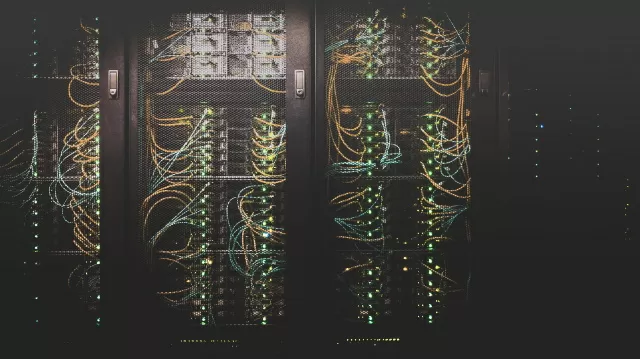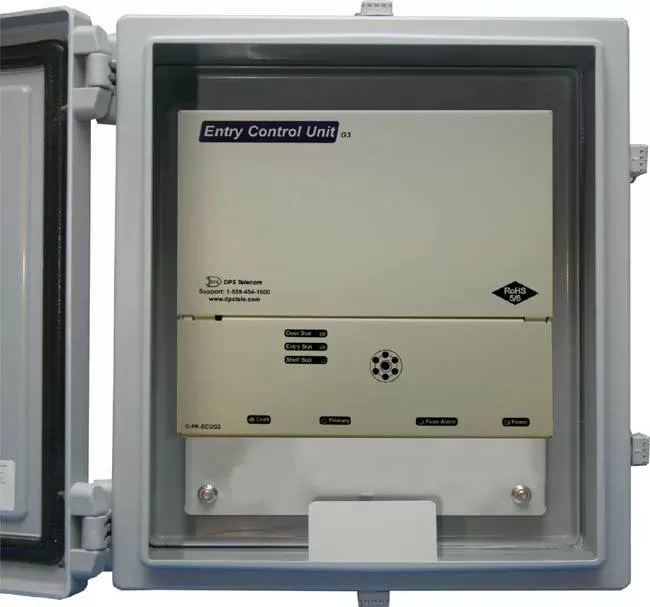Check out our White Paper Series!
A complete library of helpful advice and survival guides for every aspect of system monitoring and control.
1-800-693-0351
Have a specific question? Ask our team of expert engineers and get a specific answer!
Sign up for the next DPS Factory Training!

Whether you're new to our equipment or you've used it for years, DPS factory training is the best way to get more from your monitoring.
Reserve Your Seat TodayYour alarm monitoring system is a direct contributor to your network's uptime. Choosing and installing efficient devices will help you cut costs, protect your revenue, and will ultimately make your job easier.
A remote monitoring system starts with a competent remote terminal unit (RTU). This equipment will be linked to your important gear at your remote sites to detect alarm conditions and send you notifications.
This means that your RTUs are the front lines of your monitoring system. So, if they can't adequately collect and report network threats, you will not have the visibility you need.
RTUs are present in many different industries, being especially critical for the telecom. In fact, if your company has outside plants, then making a conscious decision when choosing your RTU can be the difference between outages and constant network uptime. However, you can't simply abandon your schedule to learn everything about alarm monitoring.
That's why we put together this guide to help you identify the ten most important features of outside plant RTUs.

If you deploy an RTU that doesn't support your existing transport (the method that your devices utilize to send data), you'll be forced into performing expensive infrastructure expansion just to achieve basic monitoring. Find an RTU that reports alarms over the connection you have available, which could be LAN, dial-up, T1, or dedicated circuits.
A wireless modem is also valuable, whether or not you have another connection available. For example, at sites where you have no other way to report alarms, a wireless connection eliminates the need to run cable just for your monitoring.
Even when you have other connections available, wireless is an excellent alternate reporting path. If your primary connection fails, an efficient RTU will automatically reroute alarms over wireless, maintaining your complete network visibility at a time when you need it most.
Remember that, at some sites, you don't necessarily have as much transport redundancy as you think. Digital microwave can carry both LAN and overhead serial, but they're both tied to a single system. If you lose your microwave connection, they both go down. In this scenario, an RTU with an integrated wireless modem has an excellent alternate reporting path.
An RTU like the NetGuardian 832A G5 allows you to have a wireless connection via GSM or CDMA. This enables wireless alarm reporting as an alternate path or at very remote sites without wired transport.

Outside plant sites can be small cabinets or enclosures with very little rack space, and your revenue-generating equipment probably already consumes most of it. You might not have much room for monitoring gear but you can't neglect functionality though.
The best way around this issue is to make sure your RTU can pack all the functionality you need in a single rack unit (RU). If rack space is not an option, wall-mountable RTUs allows you to add monitoring without in a compact form factor that will not consume any rack space at all.
The industry best practice here is to buy an RTU that performs the roles of several other devices. For example, if your RTU has an integrated hub and terminal server, you've just reduced your physical space consumption by two rack units.
The NetGuardian 832A G5 and NetGuardian 420 RTUs both have terminal servers (8 ports and 4 ports, respectively). In fact, most of the RTUs in our NetGuardian line has at least a single serial port that you can use as a terminal server.
If you have outside plant sites where T1 is the only available connection, you probably have LAN-capable equipment that you can't currently access. An RTU that supports T1 transport (FrameRelay or PPP) will collect and report alarms, but why stop there?
Make sure your T1 RTU has an integrated hub. This way, you can deliver Ethernet to your LAN devices. You'll be able to access them directly in their native interfaces where you never could before, all without purchasing any additional gear.
If that's an important aspect for you, make sure to look into the NetGuardian 832A G5. This RTU has an integrated network hub so you can distribute LAN without an extra hub or switch.
All of the equipment in your outside plant sites is important for your network. You shouldn't have to risk leaving any piece of gear unmonitored simply because it has a legacy serial interface, and you should never be forced to roll a truck just to perform simple maintenance.
Deploying an RTU with an integrated terminal server allows you to access serial equipment as easily as if you were on-site.
As I said previously, the NetGuardian 832A will have 8 terminal servers ports.
Sending technicians to all of your sites just to perform routine updates usually causes unnecessary expenses in terms of both time and money. The RTU devices you invest in should support remote provisioning and firmware updates. This way, when they need firmware updates or when you need to change device provisioning, you won't have to waste your techs time on long drives to your sites.
The best RTUs in the market allows you to queue up a batch of firmware upgrades and begin executing them with a single click. You shouldn't have to pay an operator to babysit a simple update.
That's why we make it possible for our clients to upgrade their monitoring systems at no cost. By downloading firmware and MIB files from our website your device can acquire new features and better functionalities.
Outside plant sites are often some of the most remote, so your monitoring gear needs to give you very detailed site information - especially when alarms happen. Deploying an RTU that has analog inputs is an excellent way to give your visibility a major boost.
Analog inputs collect exact values from sensors, reporting temperature, humidity, fuel levels, battery voltages, and other critical data with very high accuracy. Discrete alarms, on the other hand, can't give you this level of detail by themselves.
Our RTUs support user-definable alarm thresholds for every analog input. With this capability, you can set up and receive alarms when an analog value crosses a Minor Over, Minor Under, Major Over, or Major Under threshold.
When searching around for your RTU, make sure it's able to withstand extreme temperatures and humidity levels in the most hostile site environments. Review the manufacturer's temperature and humidity operating ranges and ensure that they are adequate for your region's climate.
Most of our devices can support an industrial temperature range of -22F to 158F (-30C to 70C). But, if you plan to leave your RTU exposed to the elements, we have what's called a NEMA Enclosure.
The National Electronics Manufacturers Association (NEMA) defines standards for various grades of electrical enclosures typically used in industrial applications. A usual NEMA box or case provides protection against environmental hazards such as water, dust, oil or coolant, or atmospheres containing agents like acetylene or gasoline.
But, of course, you don't have to trust us. Instead, ask to see the contact information of the companies who have already deployed our solutions to deal with scenarios similar to yours.

Finding the right point capacity for your sites can be tricky. It's important to have enough alarm points to monitor all of your revenue-generating gear, but it's not efficient to pay for so much capacity that you will never be able to use.
That's why we have several different RTU models of varying capacities to ensure you're able to achieve the right fit. Also, some of our devices support multiple expansion chassis so that you're prepared for future network growth.
Alarm remotes with control relays allow you to remotely control a wide range of site equipment. Whether you need to activate generators, unlock doors, turn on beacon lights, or handle a wide range of other tasks, you shouldn't have to drive out to the site to do it.
By wiring equipment into the control relays of your RTU, you can control that equipment right from your central office, saving a bundle in time and expense.
Most of our RTUs have control relay capability, but you are interested in a certain device that has fewer relays than what you need, simply let us know. We can custom build an RTU for you with the exact number of relays you need.
Alarm inputs alert you to problems at your remote sites. Control relays allow you to take action remotely. Derived controls do both in just seconds, without requiring any human intervention.
An RTU that supports derived controls can automatically respond to combinations of standing alarms. You can, for example, set up your RTU to activate a backup generator when commercial power has failed and your site batteries are running low. You can activate backup tower lights when the primary lights have failed. The opportunities are virtually endless.
Derived controls also add an extra layer of reliability to your monitoring system, because they continue to function locally when the connection to the central office is lost.
Choosing an efficient RTU is a big responsibility. After all, this device will directly affect your network reliability (for better or for worse) for years to come.
As a trusted remote monitoring solutions provider, we want to make sure you are making an informed decision. So, our goal is to always listen to your needs and explain how our devices will help you solve your pain points. In fact, if your unique requirements we can design and build a custom solution tailored specially for your scenario.
So, simply give us a call and start protecting your outside plant sites with a cost-effective RTU.

Morgana Siggins
Morgana Siggins is a marketing writer, content creator, and documentation specialist at DPS Telecom. She has created over 200 blog articles and videos sharing her years of experience in the remote monitoring industry.